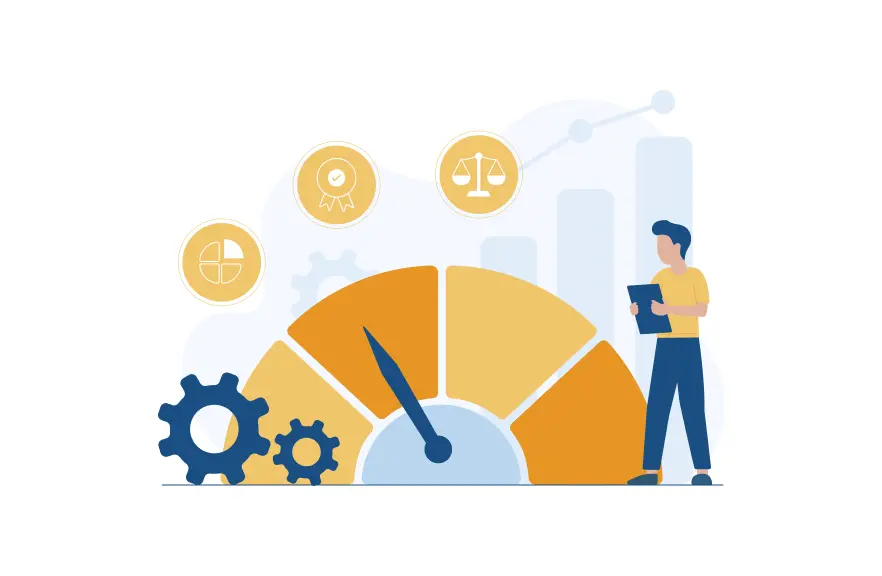The business world is constantly evolving, with emerging markets, shifting consumer preferences, and new technologies bringing both opportunities and risks. To navigate this ever-changing landscape successfully, analyzing data has become crucial. By harnessing the power of business analytics, companies can effectively manage risks and make informed decisions that drive growth and success.
What is Business Analytics?
So, what exactly is business analytics? It’s the process of analyzing data to gain insights that inform business decisions. Through data collection, processing, and analysis, organizations can uncover valuable patterns, trends, and insights that guide their choices. Business analytics encompasses various techniques to extract insights from structured and unstructured data, including data mining, predictive analytics, and machine learning.
Importance of Risk Management and Decision Making in Business
Why is risk management important? Well, risk management allows businesses to identify and mitigate potential threats that could harm their objectives. Similarly, decision-making is the backbone of successful business operations, as it enables companies to make informed choices that drive growth and success.
How Business Analytics Helps in Risk Management

Business analytics plays a pivotal role in risk management by identifying, assessing, and mitigating potential risks that can impact an organization. Here’s how it helps:
- Identifying Risks: By analyzing data from various sources, such as financial, customer, and market data, companies can identify potential risks and develop strategies to prevent them from causing harm.
- Real-time Monitoring: Business analytics enables real-time risk monitoring by analyzing data from multiple sources. This empowers companies to identify potential risks promptly and take necessary actions to mitigate them before they escalate.
- Predictive Analytics: By leveraging historical data, companies can use predictive analytics to forecast potential risks. Armed with this knowledge, they can proactively develop strategies to mitigate those risks.
Business analytics can be applied to various aspects of risk management. Here are some examples:
- Fraud Detection: Using predictive modeling and real-time monitoring, businesses can efficiently detect and prevent fraudulent activities by analyzing transaction patterns and user behavior.
- Cybersecurity: With the rise of technology, cybersecurity has become a top concern. Business analytics helps identify potential cyber threats by analyzing network traffic, user behavior, and system activity for patterns and anomalies.
- Supply Chain Risk Mitigation: Managing the supply chain can be complex, but business analytics simplifies it. Companies can identify potential bottlenecks or disruptions by visualizing data and analyzing transportation routes, inventory levels, and supplier performance
How Business Analytics Helps in Decision Making

Now, let’s explore how business analytics enhances decision-making:
- Data-driven Decisions: Business analytics provides valuable insights into business operations, allowing companies to make evidence-based decisions rather than relying on intuition alone. This approach leads to better outcomes.
- Improved Efficiency: By leveraging business analytics, companies can identify areas where costs can be reduced or increase revenue, boosting overall efficiency and effectiveness.
- Competitive Advantage: Analyzing market data through business analytics helps companies gain insights into their competitors’ operations. This strategic approach identifies areas for improvement and gives businesses a competitive edge.
Here are some decision-making examples that benefit from business analytics:
- Customer Segmentation: Using predictive modeling and data visualization, businesses can identify customer segments and develop targeted marketing strategies tailored to each segment’s unique needs and preferences.
- Product Development: Predictive modeling and real-time monitoring enable companies to identify trends and patterns in customer behavior. This knowledge informs the development of new products aligned with customer needs and preferences.
- Financial Forecasting: Business analytics facilitates financial forecasting, helping businesses make informed investment decisions. By leveraging predictive modeling, companies can forecast financial outcomes and identify potential risks and opportunities.
Tools and Techniques for Business Analytics
In the world of business analytics, there are many tools and techniques available to help extract valuable insights from data. Here are some commonly used ones:
- Statistical Analysis: This method uses statistical techniques like regression analysis, hypothesis testing, and correlation analysis to analyze and interpret data. It’s great for spotting trends, patterns, and concluding data sets.
- Data Visualization: This approach focuses on creating visual representations such as charts, graphs, and maps to help users identify patterns and trends. It’s handy for non-technical users and for finding relationships between different data sets.
- Predictive Modeling: Using historical data allows businesses to forecast future trends and potential outcomes. It helps make informed decisions and identify risks and opportunities.
- Machine Learning: Machine learning algorithms are used to detect patterns and trends in data, enabling predictions based on that information. It’s beneficial for uncovering hidden patterns and analyzing large, complex data sets.
- Real-time Monitoring: This technique involves monitoring business operations in real-time to identify risks and opportunities as they arise. It helps address potential issues promptly and make quick, informed decisions.
These tools and techniques can be applied in various contexts to manage risks and make better decisions, helping businesses grow and thrive.
Benefits of Implementing Business Analytics
Implementing business analytics in risk management and decision-making can provide several advantages:
- Improved decision-making accuracy and efficiency.
- Proactive identification and mitigation of potential risks.
- Enhanced customer satisfaction through targeted marketing and product development.
- Increased profitability through better financial forecasting.
Challenges and Limitations of Business Analytics
While business analytics offers several benefits, there are also challenges and limitations to consider:
- Data quality issues: Inaccurate or poor-quality data can lead to flawed analysis and decision-making.
- Cost: Implementing business analytics can be expensive, especially for smaller businesses.
- Technical expertise: Employing business analytics requires specialized skills and knowledge.
To overcome these challenges, companies can invest in data quality measures, seek assistance from business analytics service providers, and provide training and development opportunities to their employees.
Future of Business Analytics
The future of business analytics in risk management and decision-making is promising. Here are some emerging trends and technologies to watch out for:
- Artificial intelligence and machine learning for predictive modeling.
- Real-time analytics for faster decision-making.
- Cloud-based analytics for improved scalability and flexibility.
As these technologies continue to advance, the potential applications of business analytics in risk management and decision-making will expand.
Unleash the Power of Business Analytics for Smarter Decision-Making
Implementing business analytics in risk management and decision-making offers numerous benefits, including improved decision-making accuracy and efficiency, proactive risk identification, and increased profitability. While challenges exist, they can be overcome through data quality measures, utilizing external business analytics service providers, and investing in employee training and development.
At LatentView Analytics, we will help you explore how business analytics can help your business make informed decisions and mitigate risks. Reach out to us to learn more about our cutting-edge solutions.




